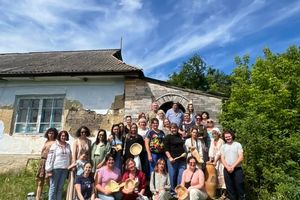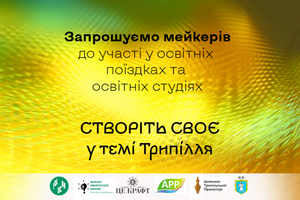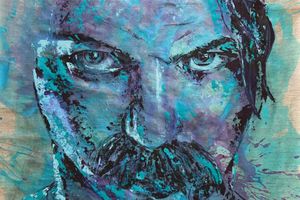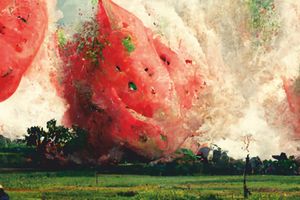The It's Craft Charitable Foundation, as part of its victory in the Makers Innovation Award, is implementing the Mythologizing Trypillia project and the first educational trip to Cherkasy and Poltava on May 25-27.
The event aims to create an environment for the development of creativity and professional skills of participants through educational trips aimed at learning various traditional Ukrainian crafts. It also aims to create conditions for the restoration of small communities based on tangible and intangible cultural heritage.
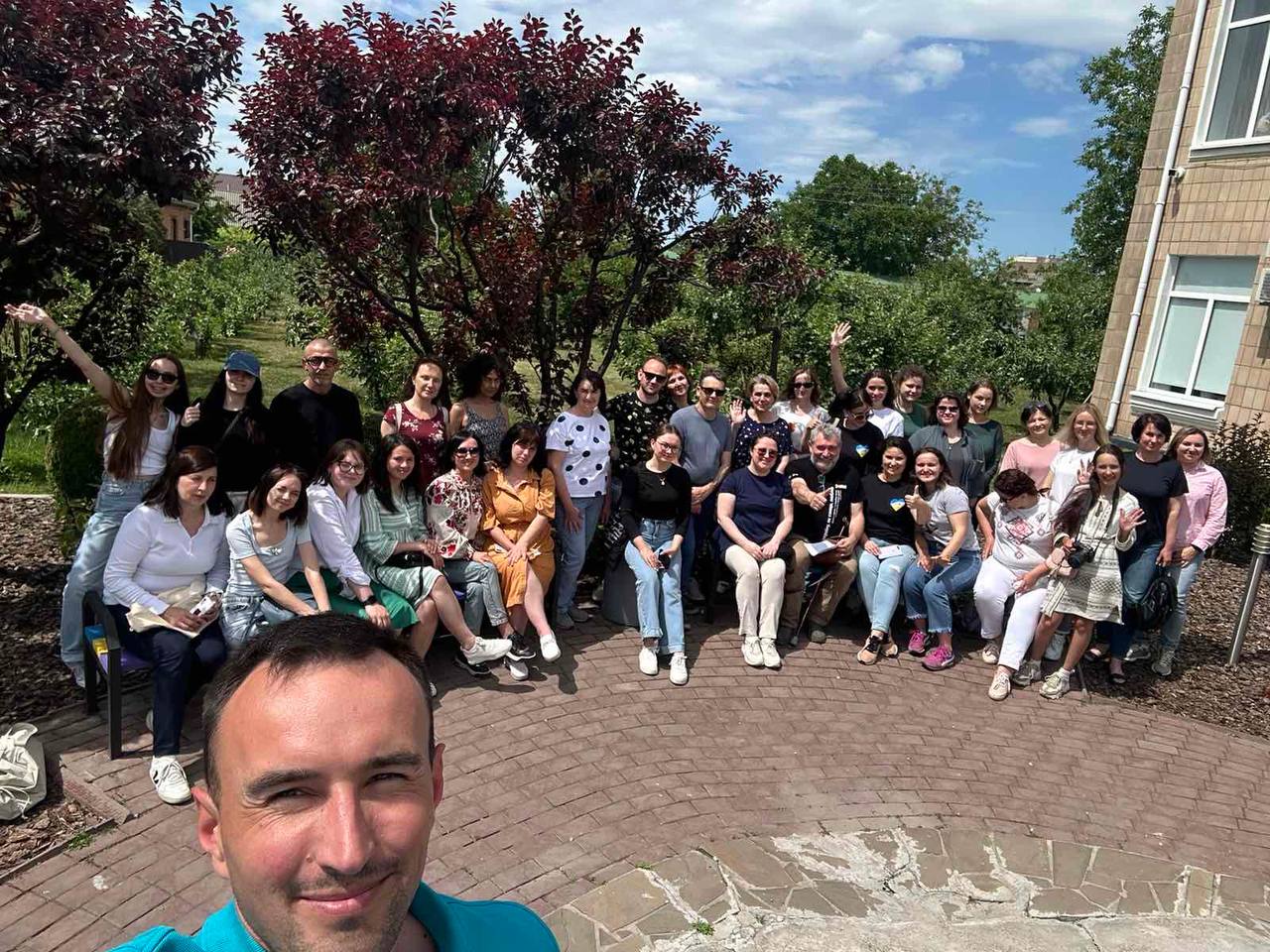
The trip was attended by 35 people from the sectors of making, business, local government, science and design:
- Mirzodaieva Tetiana. National University of Food Technologies. Kyiv.
- Olga Tsybulya. Lviv National Academy of Arts. Ceramics of fire. Vinnytsia region.
- Poplavska Victoria. Workshop “Free thread”. Kyiv region.
- Dmytro Ryzhyi. Tulchyn Professional College of Culture. NGO “KeramArtMisto”. Vinnytsia region.
- Natalia Goncharova. Freelancer, painting, graphics, design, ceramics. Kyiv.
- Ostapenko Olha. “Ostap's estate”. Cherkasy region.
- Denys Muzyka, individual entrepreneur, jewelry design “Denis Music”. Kyiv.
- Stebliuk Olha. “Creative” (jewelry, brooches). Vinnytsia region.
- Kutetska Olena. Art center. Uman.
- Vaskevych Olha. Creative studio “Craquelure”. Kyiv region.
- Chernysh Maria. Tulchyn Professional College of Culture. Vinnytsia region.
- Lavreniuk Natalia. Tulchyn Professional College of Culture. Vinnytsia region.
- Roman Hrymalyuk. Tulchyn Professional College of Culture. NGO “CeramArtCity”. Vinnytsia region.
- Hrymalyuk Olena. Tulchyn Professional College of Culture. Vinnytsia region.
- Melnychuk Alyona. Taras Shevchenko National Medical University No. 1. Vinnytsia region.
- Bas Svitlana. Mankivka children's art school. Cherkasy region.
- Sunny Lilia. Student of the Rylsky Institute of Art History, Folklore and Ethnology of the National Academy of Sciences of Ukraine. Khmelnytskyi.
- Reznichenko Iryna. Tulchyn Professional College of Culture. Vinnytsia region.
- Puzhak Ustyna. Lviv National Academy of Arts. Ceramics of fire. Lviv.
- Malanska Valeria. MALASHOP. Vinnytsia region.
- Osipenko Nataliia. Pavlo Tychyna Uman State Pedagogical University. Uman.
- Ilnytska Anna. Pavlo Tychyna Uman State Pedagogical University. Uman.
- Onishchenko Olga. Kryzhopil School of Arts. Vinnytsia region.
- Ryzhyi Vasyl. Tulchyn Professional College of Culture. Vinnytsia region.
- Kizian Ioanna. Clay modeling, pottery. Cherkasy region.
- Tetiana Brychuk. Kryzhopil House of Schoolchildren. Vinnytsia region.
- Marchuk Olena. Cultural and Leisure Center of Rayhorod Village Council. Vinnytsia region.
- Hnatenko Nataliia. Department of Economics, Strategic Planning and Investment Development of Tulchyn Local Council. Vinnytsia region.
- Petrova Yulia. Uman children's art school “Antares”. Uman.
- Svitlychna Maya. Uman Children's Art School “Antares”. Uman.
Tasks for the participants: to form a vision of their useful models and prototypes during the trip, to get contacts for cooperation, inspiration, and to choose where the educational studios will be held.
During the three-day trip, they visited places of folk crafts and trades, museums and workshops in Lehedzyne in Cherkasy region and Opishnia and Reshetylivka in Poltava region.
May 25th:
The day was dedicated to updating and deepening knowledge on the topic of Trypillian culture in the largest reserve in Eastern Europe dedicated to one archaeological culture in the village of Lehedzyne - the State Historical and Cultural Reserve “Trypillian Culture”. The director of the museum is a well-known scientist, archaeologist, museum worker, and filmmaker Vladyslav Chabaniuk. Knowledge of the depth and facts of the history of Trypillian culture will help to more correctly formulate ideas for the implementation of creative prototypes of products for participants and ensure the truthfulness in popularizing Trypillian culture among the masses.
They also visited the creative workshop of Grandpa Panas. Mykola Dekhtyarchuk, a folk artist, member of the Union of Folk Artists of Ukraine, and potter, is known by this pseudonym. He holds master classes in pottery and ceramics in the picturesque courtyard of his house. We saw an example of a place that combines creativity, makerism, and tourism. We discussed future plans and goals with the participants and got answers to all their questions.
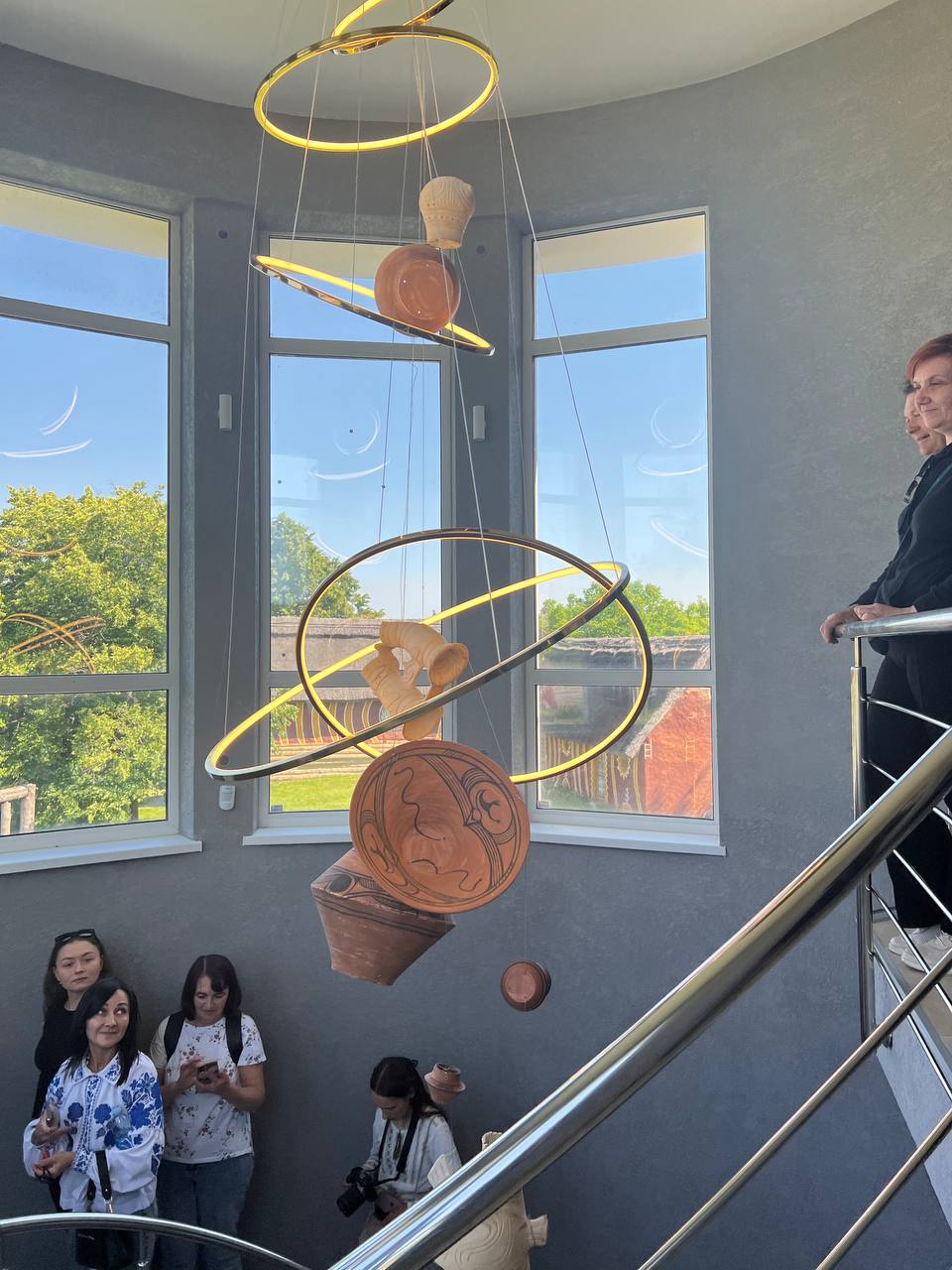

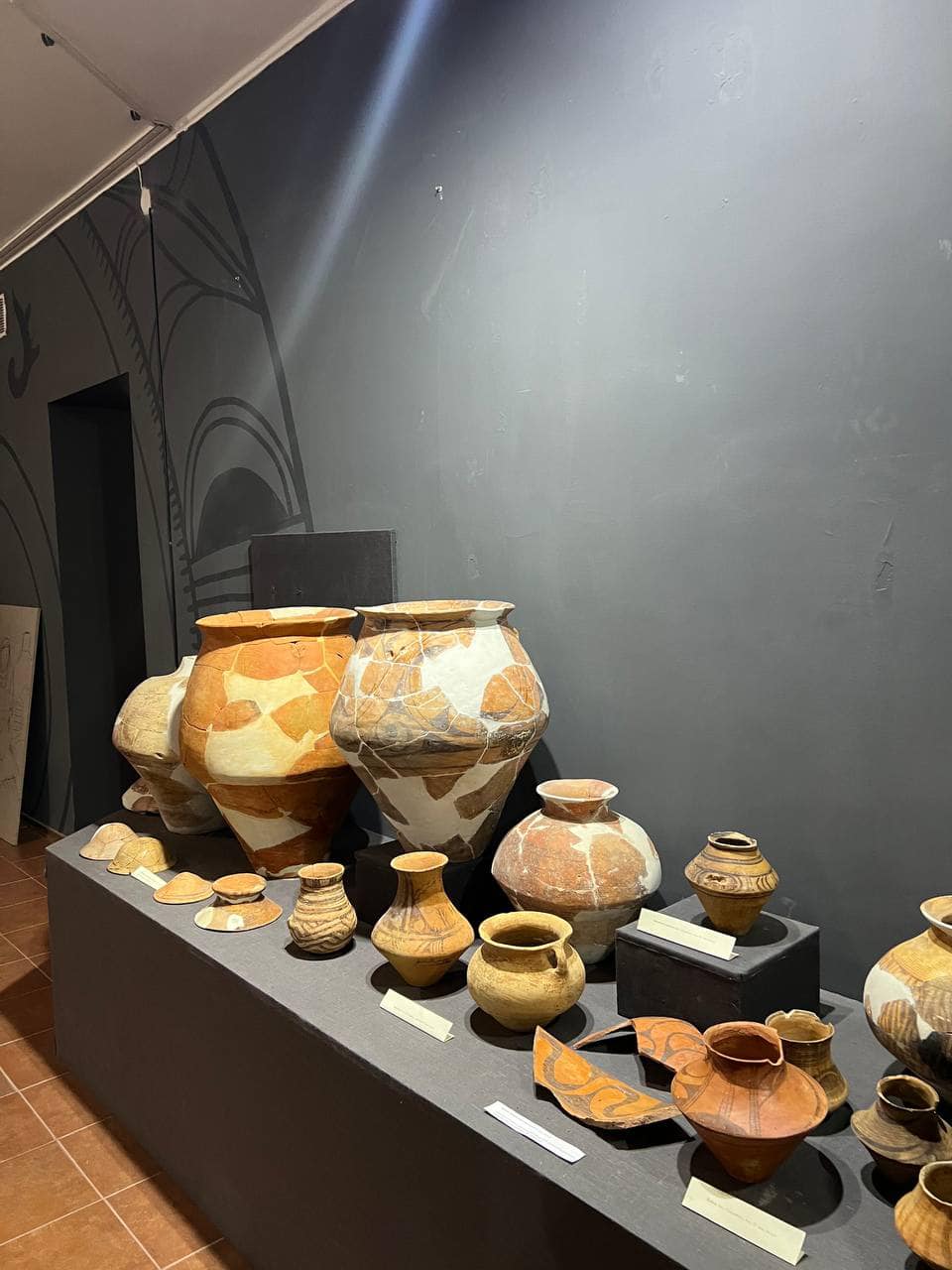
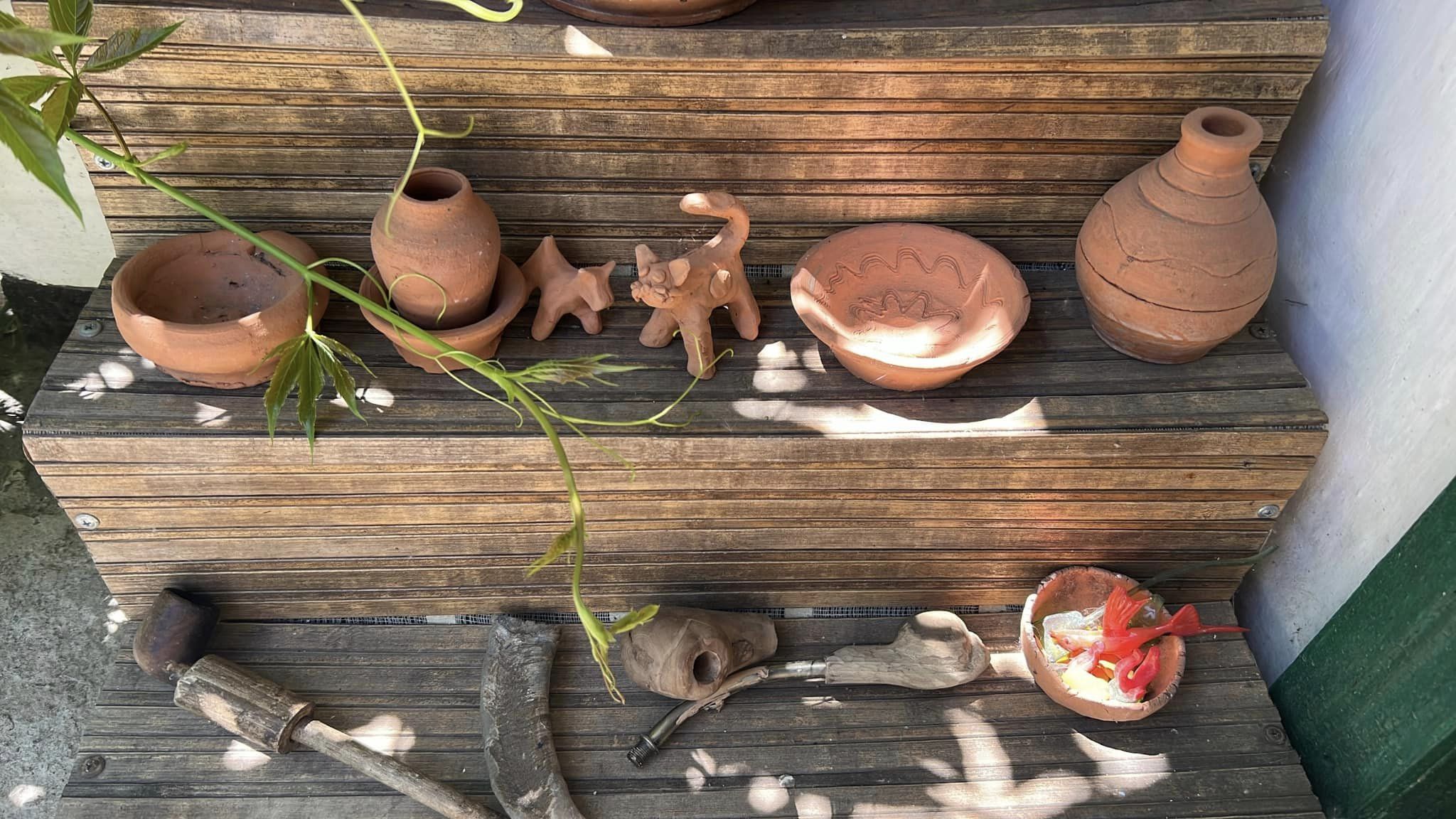

May 26th:
Together with all the participants, we went to the village of Opishnia in Poltava region, a world-famous center of folk art culture in Ukraine, the recognized capital of Ukrainian pottery
We visited the National Museum-Reserve of Ukrainian Pottery, founded in 1986. The museum has a unique collection of more than 60 thousand pieces. It is worth a walk through the vast territory, which combines authentic and modern works of clay sculpture. National symposia of pottery, ceramics, international festivals and competitions were regularly held there. The museum building houses collections of pottery, children's toys, tiles, and decorative panels. In particular, you can get acquainted with a selection of bowls from different regions of Ukraine, which allows you to find out territorial differences in shape, pattern, and color.
Next, we had a creative part of the day - a master class on making a clay whistle toy and painting a plate in the Opishnya artel. This helped the participants to partially understand whether they have a soul and hands for ceramics or not.
We also visited the museum of the Krychevsky family, a cultural and artistic dynasty that dates back to the nineteenth century. The museum is located in a house built in 1916 by architect Vasyl Krychevskyi. It was he who founded Ukrainian architectural modernism and designed the large and small coat of arms, which has not changed to this day. At different times, the building was home to pottery schools, and later to artels and the Artistic Ceramics factory. The most famous figures of Ukrainian culture, the most prominent creators and figures of national pottery passed through the building.
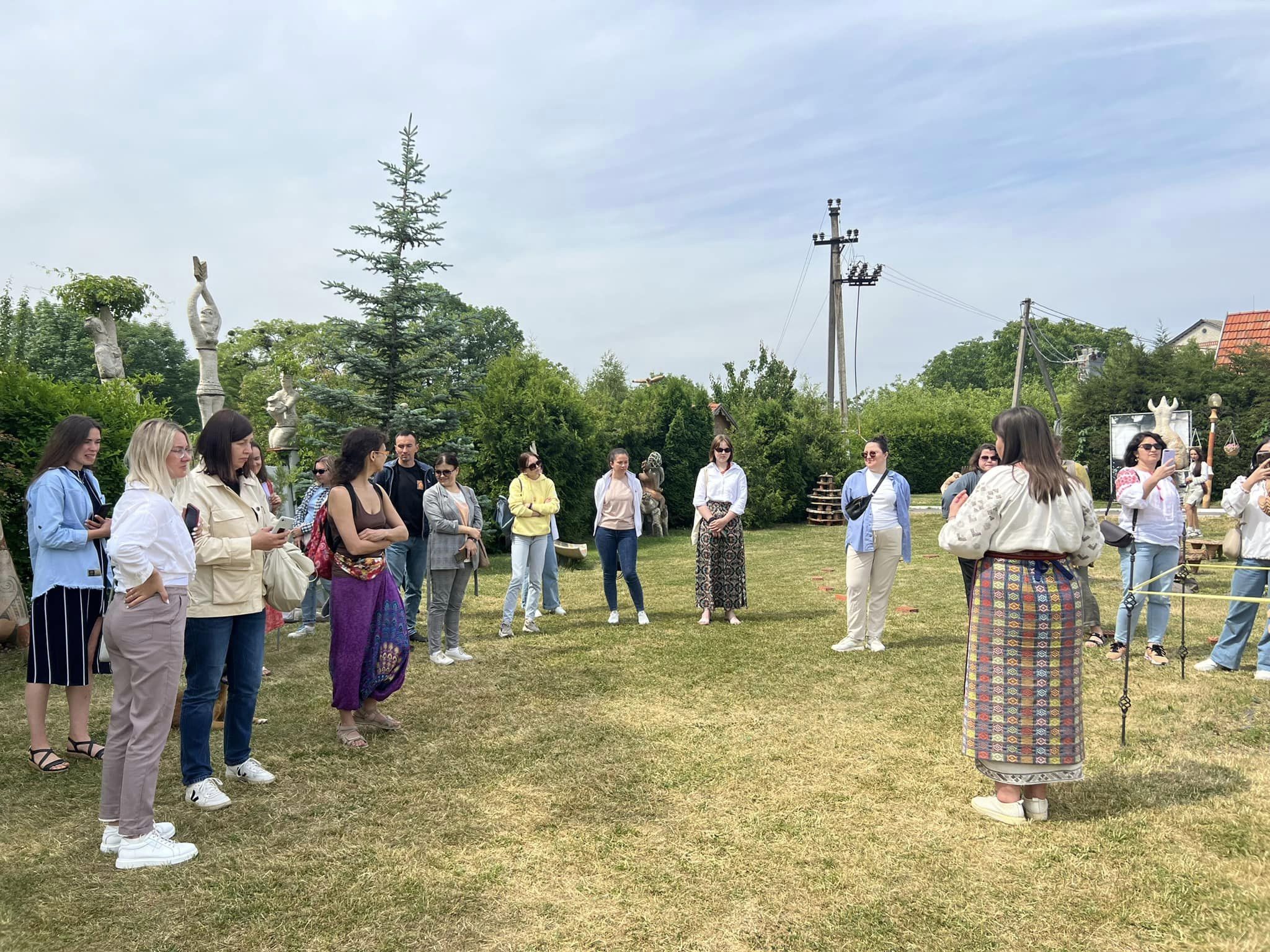
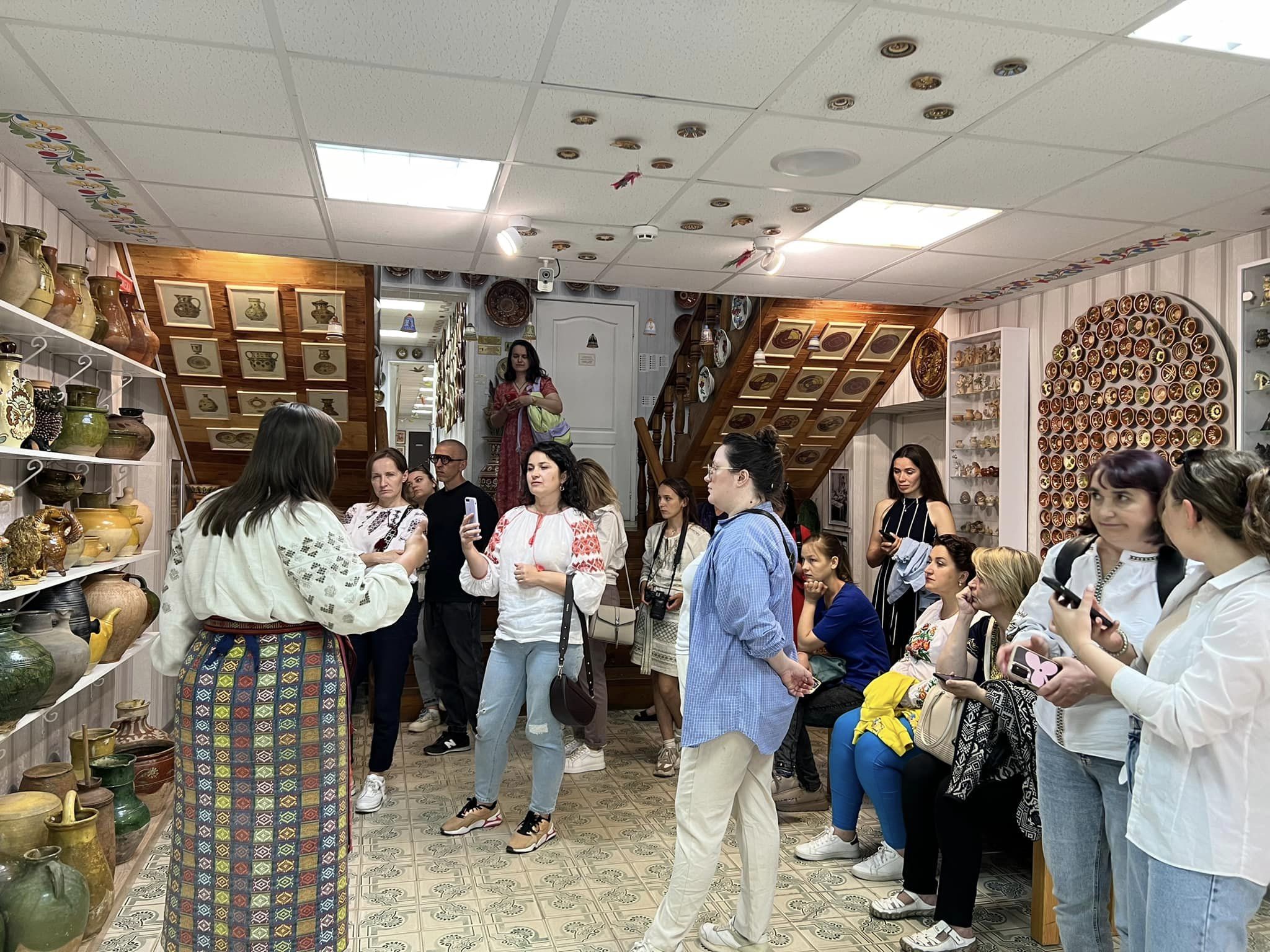
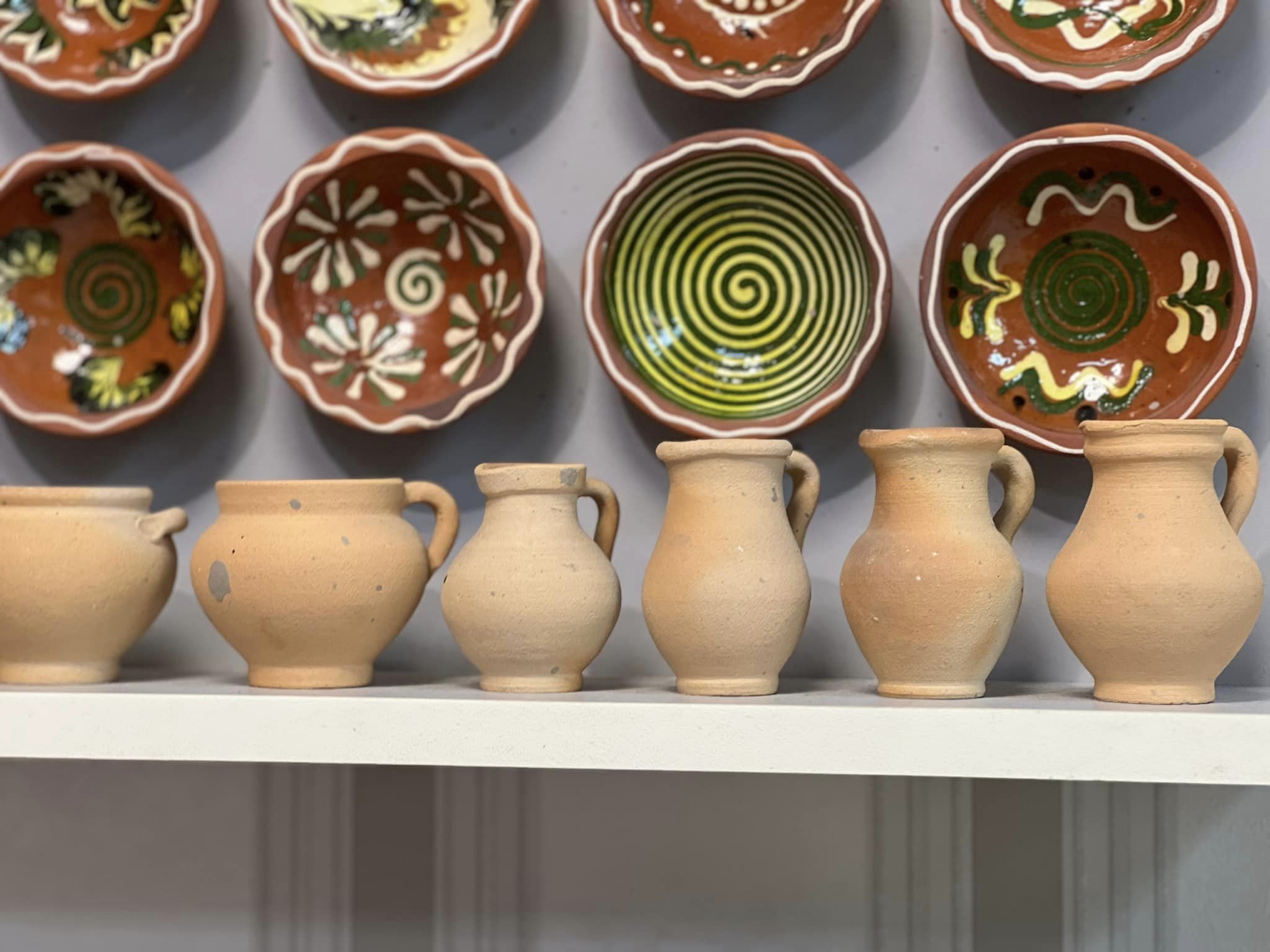
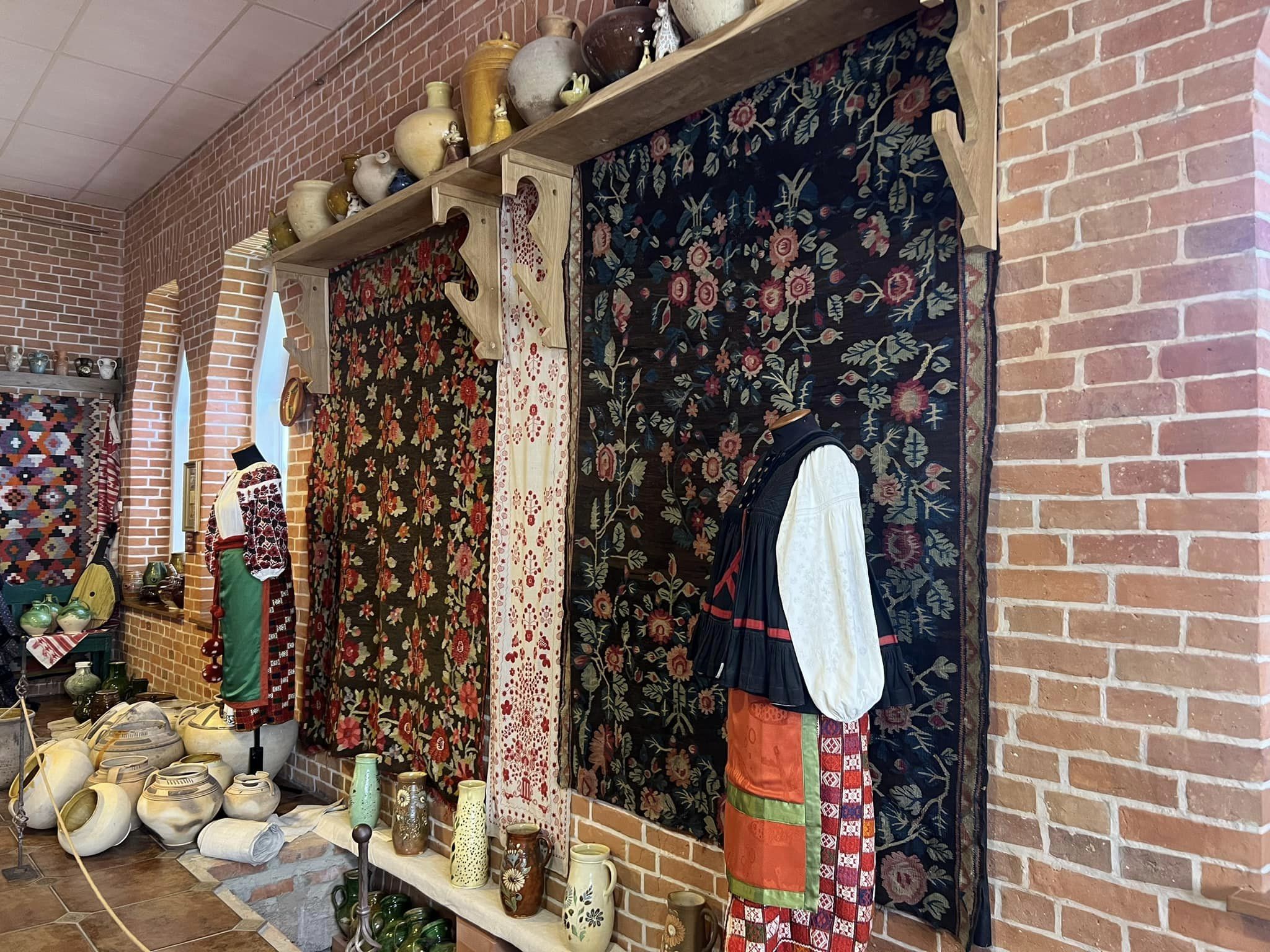
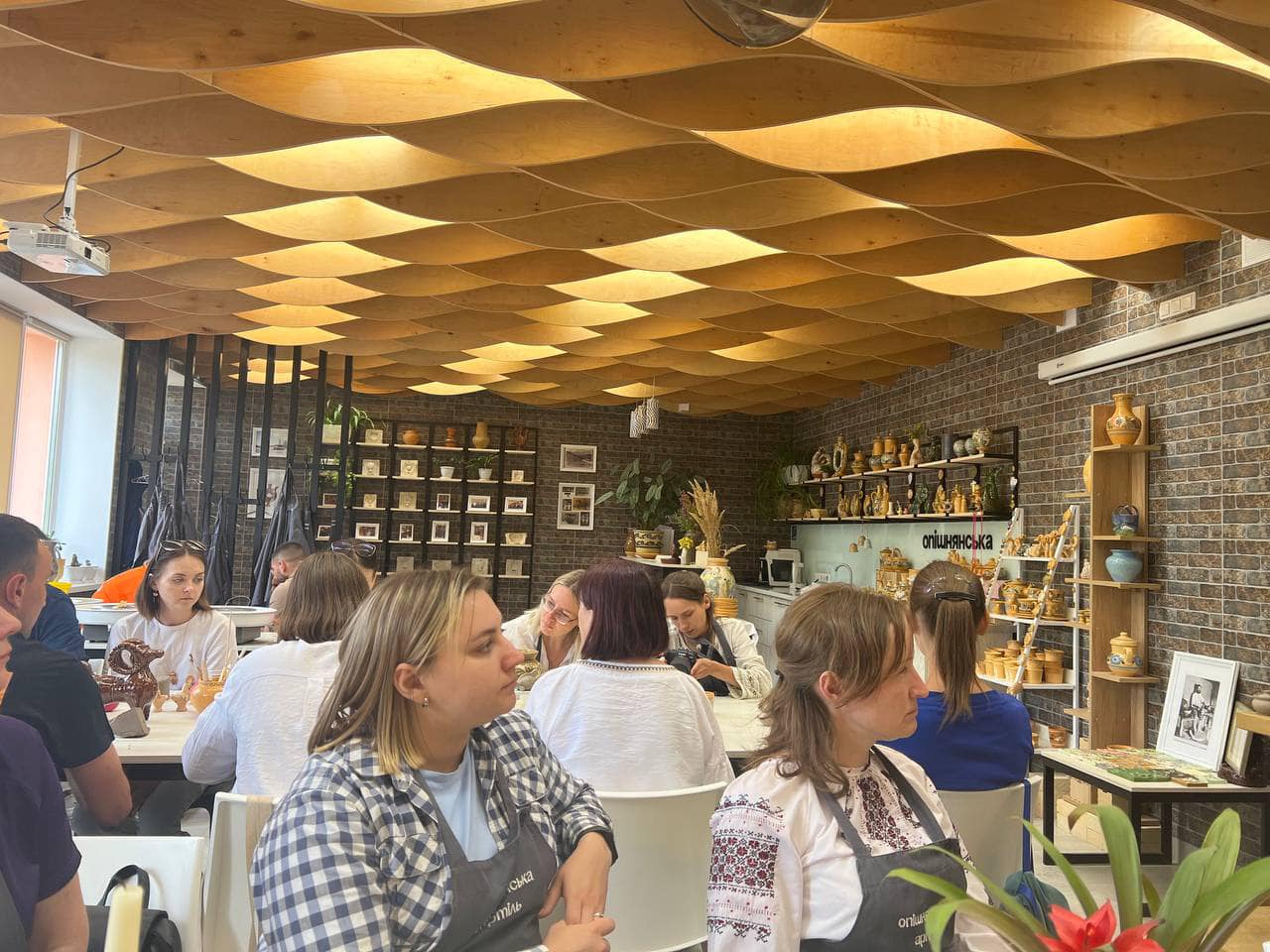
May 27th:
The main topic of this day's teamwork was weaving and embroidery in the town of Reshetylivka in Poltava Oblast. Participants often heard the idea that folk arts and crafts should be restored, given new life and popularized. But how? We went to the Solomiya workshop to find out. This entrepreneurial initiative is being implemented with the support of the UNDP Recovery and Peacebuilding Program and the UK Government.
Historically, the folk crafts of weaving and embroidery have become the hallmark of the Reshetylivka region. Solomiya's craftsmen have preserved hand weaving and added computerized embroidery.
The next stop was the All-Ukrainian Center for Embroidery and Carpet Weaving. Since 2019, the team of this incredible place has been introducing the history and modernity of folk arts and crafts. The center's exhibits feature a variety of embroidery and weaving techniques from all over Ukraine. Previously, Reshetylivka was home to the Clara Tsetkin factory, where carpets from all over the USSR were manufactured and ordered, and many famous artists realized their ideas here.
There is a legend that Olena Pchilka took the works of Reshetylivka craftsmen to France for an exhibition, where no one believed that such beauty could be made by hand.
The center's greatest pride, as well as the whole Reshetylivka, is the “white on white” technique. After 2 years of hard work, in 2017 the technique was included in the national list of intangible cultural heritage. Both embroidery and weaving were submitted to UNESCO as such.
The participants saw how the craftswomen embroidered by hand, learned about machine and computer embroidery, and tried their hand at carpet weaving.
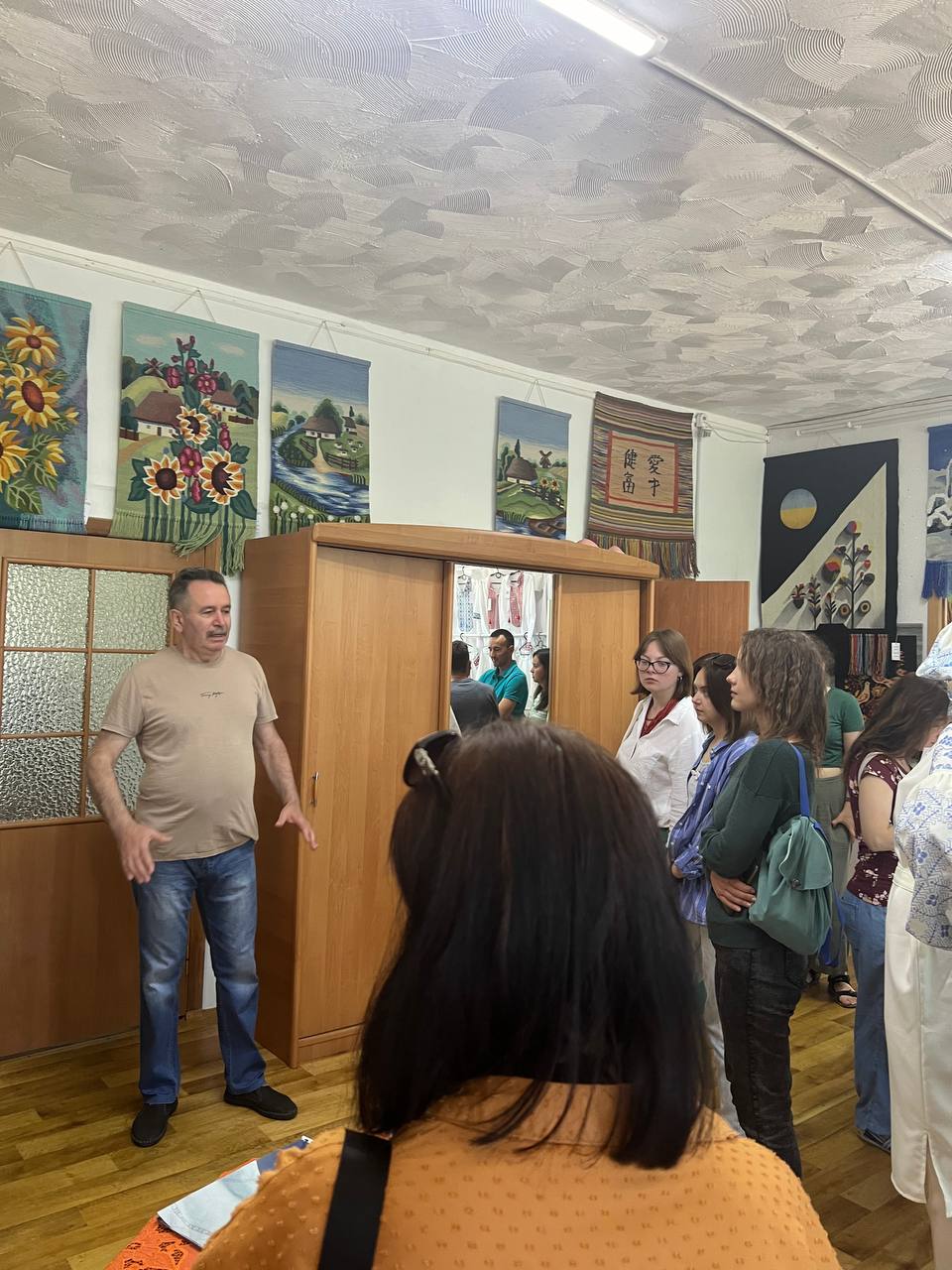
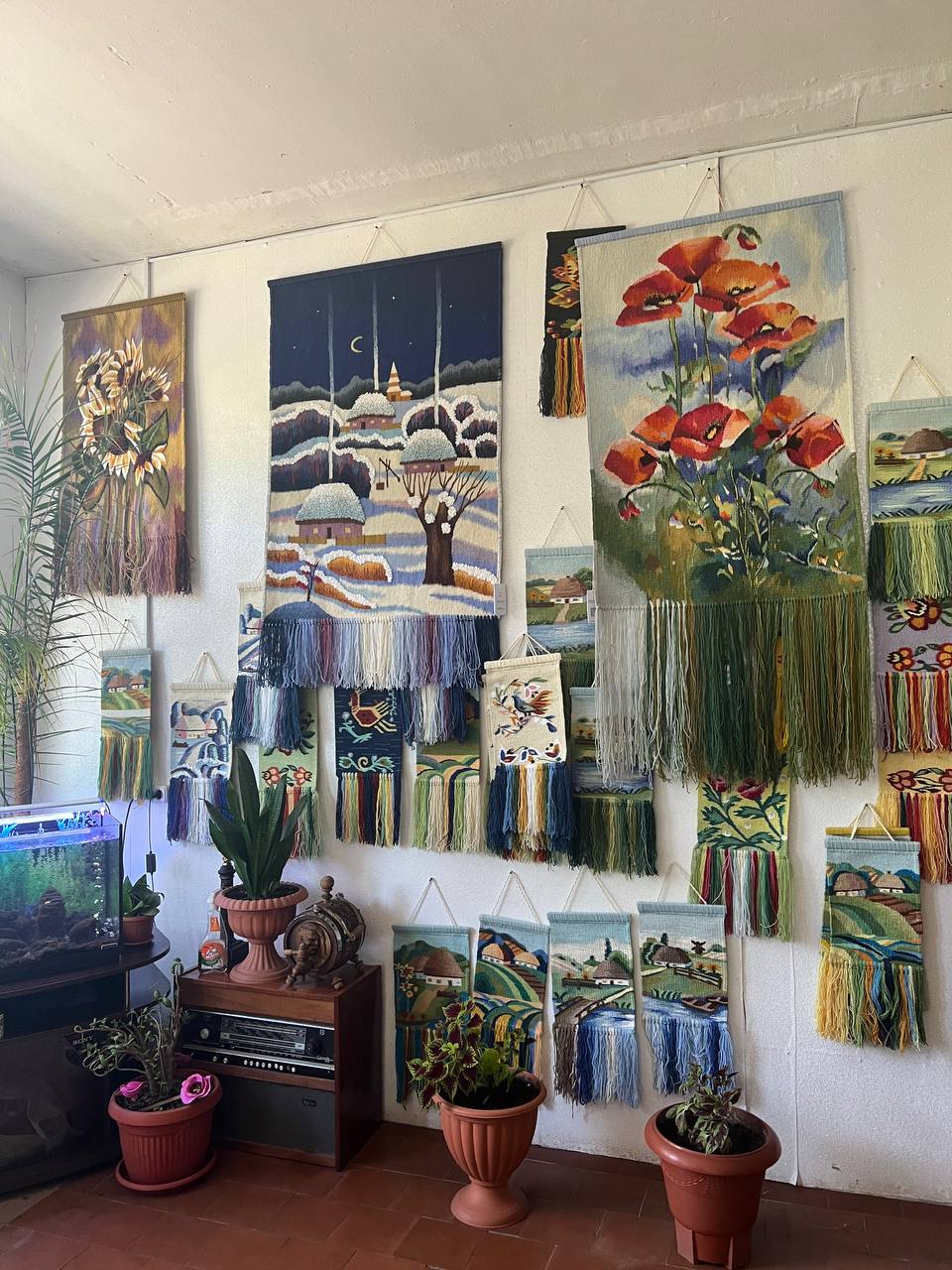
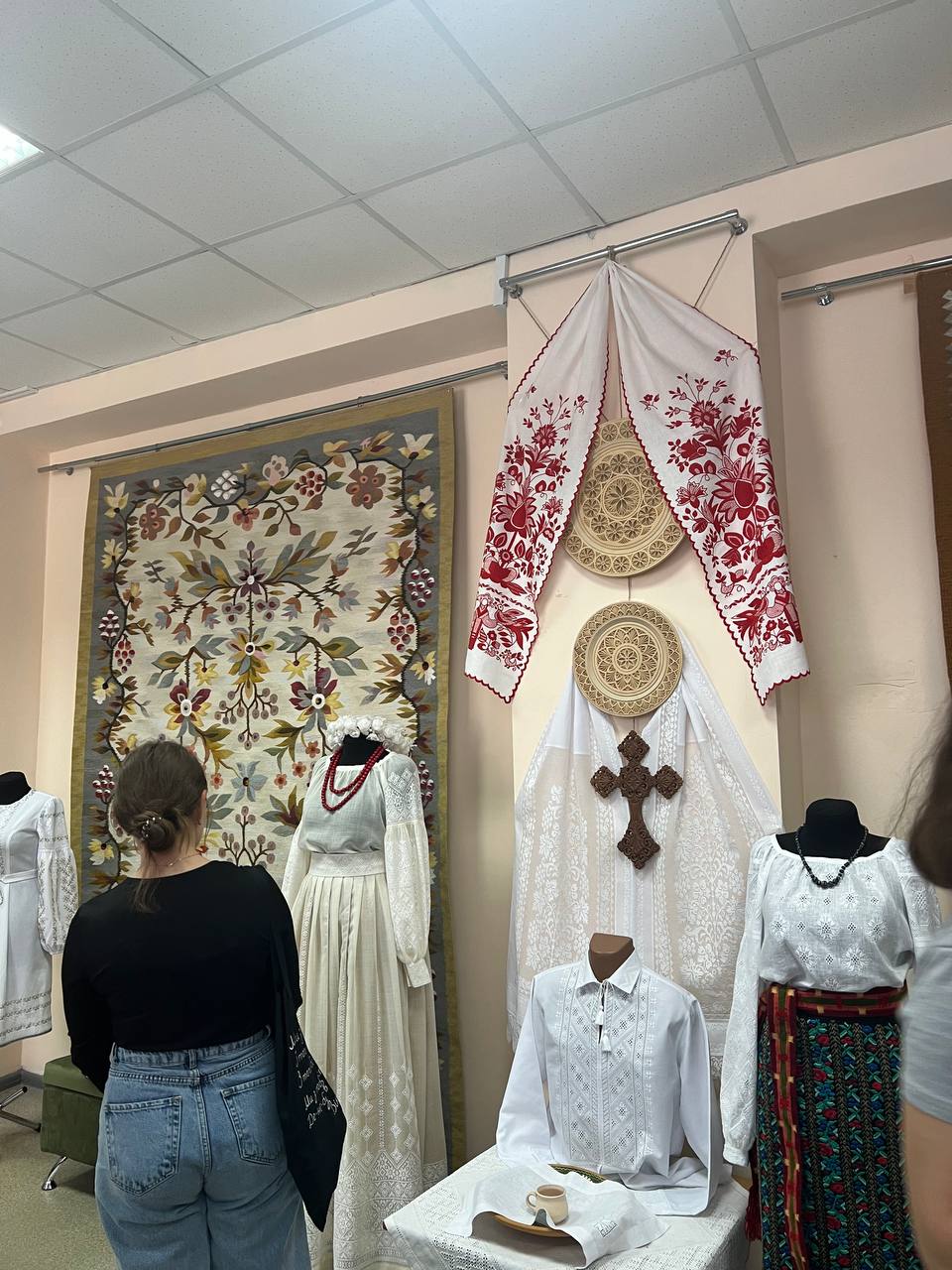
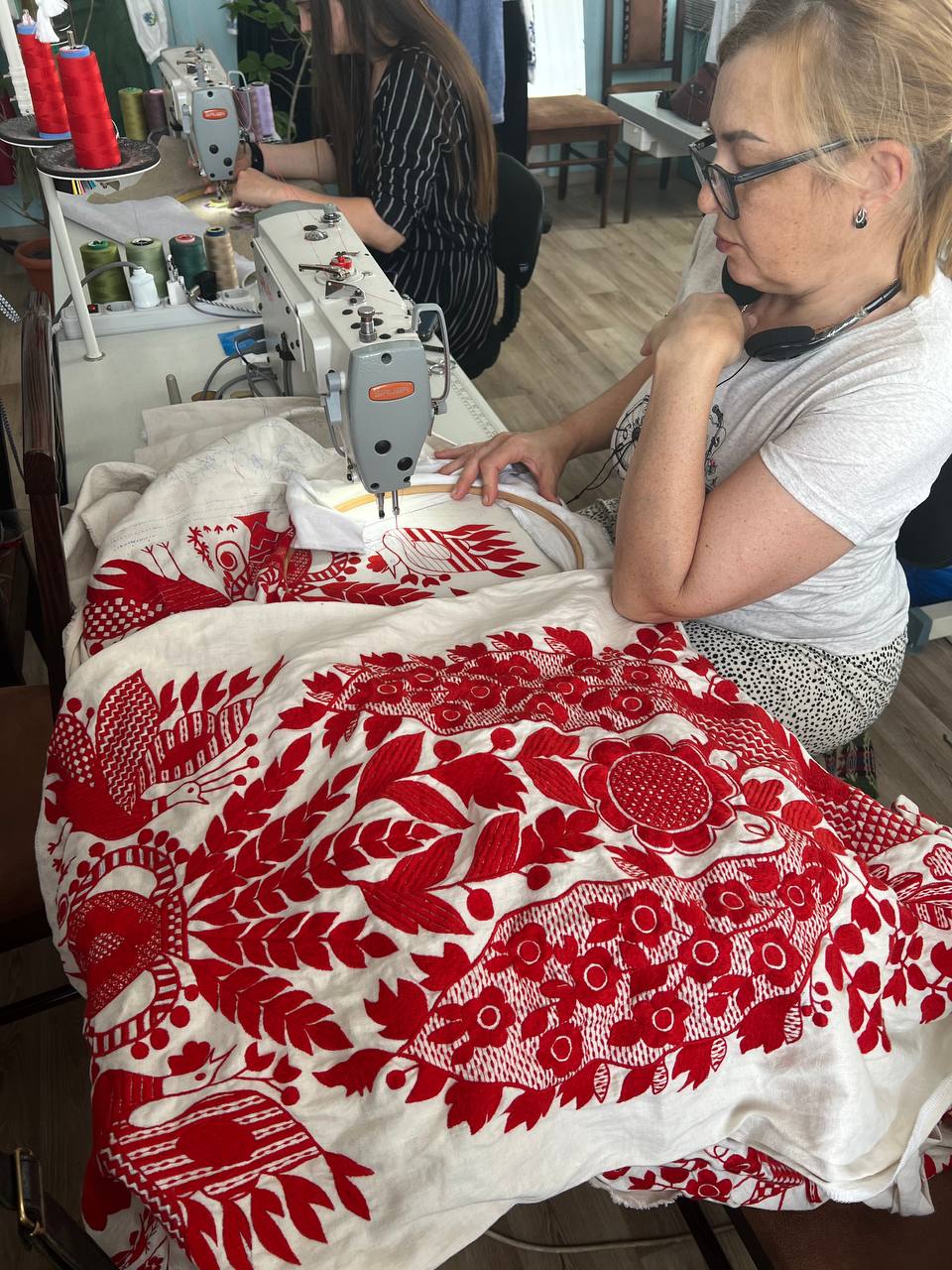
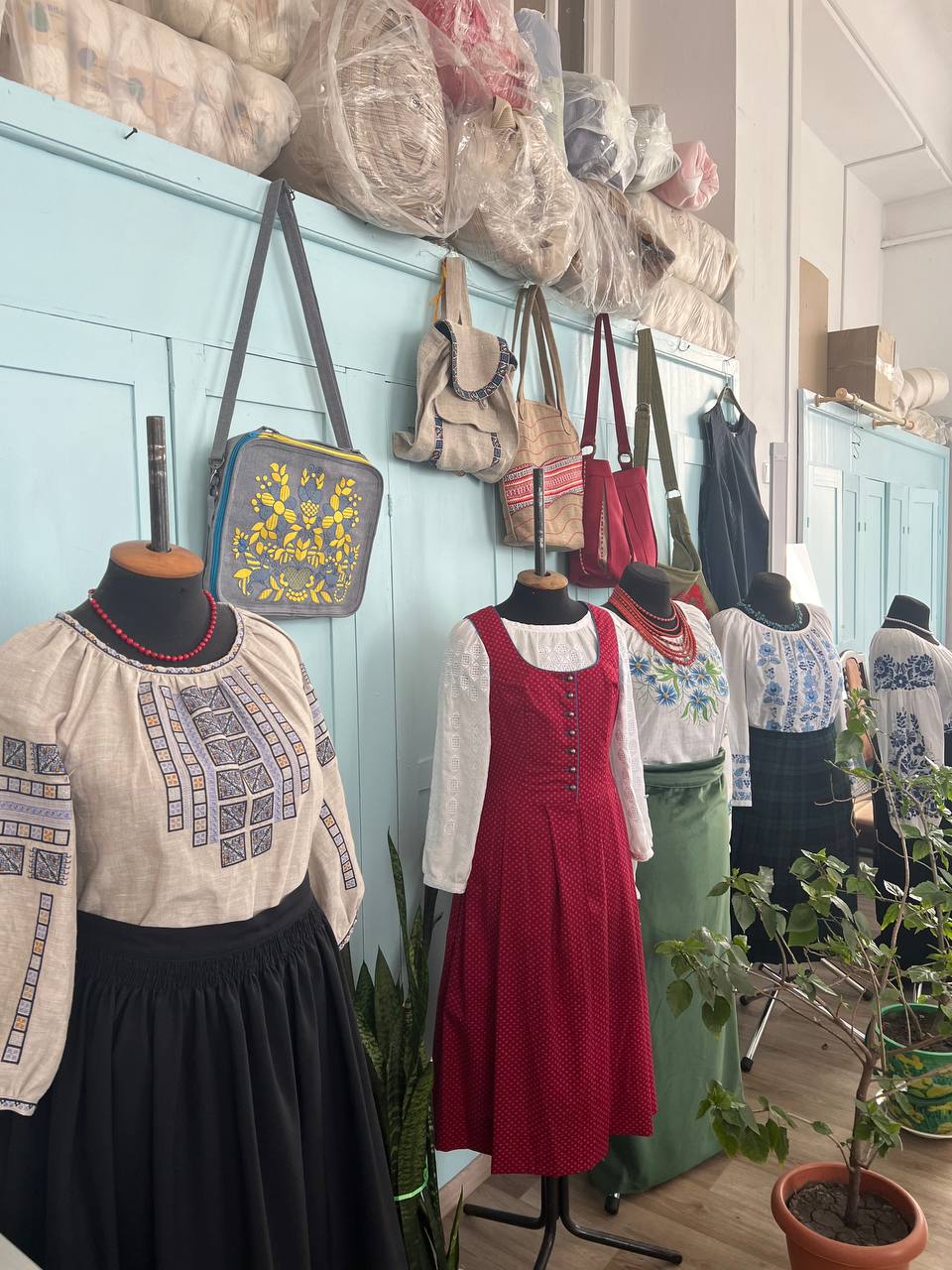
During the educational trip to Cherkasy and Poltava regions, the participants received a huge portion of inspiration and emotions. This is confirmed by the participants' feedback. Roman Hrymalyuk, head of the NGO “KeramArtMisto” in Tulchyn Tulchyn, shares: “The impressions are incredible, we received an extraordinary boost of energy for the future and projects. We plan to develop in the direction of Trypillia.” Olena Kutetska, a pottery artist, adds: “I took the most important thing from the project - inspiration and lots and lots of pleasant, very light energy from the people I met. I am very grateful to the organizers for this opportunity and support and to the people who can give me so much strength to continue to realize my dream.” Olha Vaskevych, head of the Krakeliur creative studio, is enthusiastic: “I'm fascinated by this trip and the organizers. These are very difficult times, terrible things are happening in the country, and no one has time for that. The people we have gathered are people who need help. They lack knowledge, money, confidence, experience. Our culture is so vast, so vast, and so many different planes that you can't explore it all. You can devote your whole life to it.” Olena Marchuk from the Center for Culture and Leisure of the Rayhorod Village Council also noted: “I liked the people. Incredible, creative, talented people in one place with their life experience and achievements in various creative fields. You can communicate with them and learn even more about the projects they are implementing.”
All the participants were inspired, rethought their vision of approaches to realizing their potential, and expressed their sincere gratitude to the organizers of the educational trip.
The project “Mythologization of Trypillia” is being implemented by the #FundItsCraft in cooperation with #ARRTOTG and the communities of the #Ways of the Trypillian Motherland cluster as part of the Makers Innovation Award.
The “Makers Innovation Award” is organized by @betterplacelab and Future Challenges within the framework of the #TOLOCAR project, funded by the German Government @bmz_bund and implemented by GIZ with the support of At Stake gGmbH in close cooperation with Ukrainian and international partners.



























































